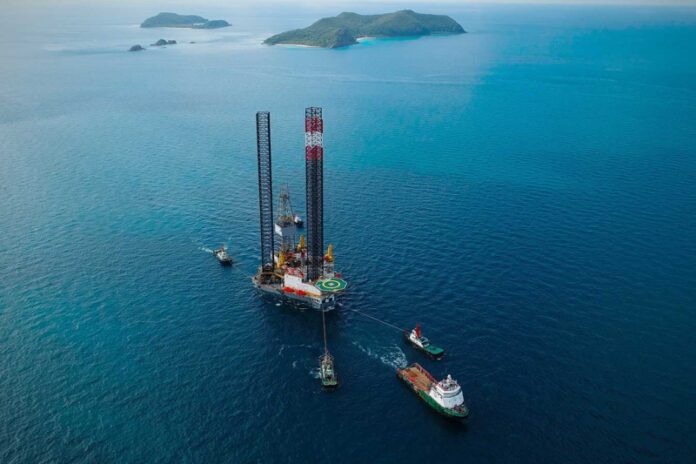The global Offshore Drilling market size is projected to grow from USD 31.26 billion in 2018 to USD 56.97 billion in 2026, at CAGR of 7.9% during forecast period, says Fortune Business Insights. According to the FBI analysts, the factors such as surging demand for electricity worldwide is expected to drive the growth of this market. Heavy investment in offshore E&P activities by national governments to bolster sales.
Despite the increase in popularity, the market for hydrographic surveys is still quite small and has significant competition from other types of surveying. However, conferring to the market projections, the industry is expected to grow over the next few years. This growth is primarily driven by an increase in maritime trade, underwater inspection, offshore wind energy projects, offshore oil exploration and dredging projects across the globe.
The increase in dredging operations and oil and gas drilling activities is boosting the hydrographic survey market. These activities are increasing in many countries, and a growing number of these activities are being carried out by commercial companies.
Africa Surveyors March-April digital issue 2023
The major factors that are boosting the hydrographic survey market include the rising use of unmanned vehicles for surveying and the emergence of new technologies such as machine learning to support complete autonomous operations. These technologies can reduce the cost of operations, while providing high-quality data that is essential for a successful project.
The primary reason why hydrographic surveys are used is to determine the depth of a water body. Hydrographic survey is a type of technology that provides a detailed description and measurement of a water body which are needed for a variety of projects, including dredging analysis, wreck location, waterway planning etc. The process involves the use of multibeam echo sounders and other sonar equipment to survey underwater areas for depth, seafloor shape, and possible obstructions. It is a critical component of any marine activities and helps maintain a safe and efficient execution of a marine project. It is necessary for involved parties of every construction project to know how deep their building area is. Besides, water depth is a key point of knowledge for navigation, inspection, dredging, drilling and other maritime activities.
Hydrographic surveys can also be conducted by a variety of organizations, from local governments to private companies. These entities may carry out surveys for geological reasons, to determine the proper location for oil and gas structures or to install underwater communication devices.
As published by FIG publication No.56, hydrographic survey operations should be determined primarily by a risk assessment, rather than by the blanket adoption of a set of rigid criteria. These Guidelines for the Planning, Execution and Management of Hydrographic Surveys in Ports and Harbours can be adopted and adapted for any hydrographic project including an offshore oil exploration project.
“Before a project kicks off, the project team will first assess the project, the scope of works and determine what the end deliverables are and what the client is wishing to acquire and achieve,” says Gaynor Deacon, Chartered Surveyor and Director at Amaza Survey Services (Pty) Ltd. “Based on the Clients Scope of Works. The Project Survey Team will determine what suite of equipment would be required to acquire the necessary data and who the potential survey team should comprise. They would then complete a desktop study to assess if there is any existing hydrographic information. This will be assessed for quality, reliability and uncertainties,” she adds.
Gaynor further particularizes on key points a survey project team will have to determine before a project is awarded or takes shape:-
how difficult it will be to survey the area (where it is in relation to closest port / can it be surveyed 24hrs day or daylight hours only / any known problems in the area – either environmental (cyclone seasons?), anthropological (e.g. drift nets or local fishing activities) or political/security (local conflicts or piracy risk)
Type of seabed.
Expected water depths, safe navigable water depths in relation to the vessel draught and/or towed array.
Expected vessel traffic for safety and security purposes.
Expected sea conditions and seasonal weather conditions (which would affect type of vessel and time of year to conduct surveys).
Accuracy of measured / predicted tides.
Positioning accuracy and source of corrections – e.g. RTK, satellite-based corrections, NTRIP.
“Based on the findings of the above, the team can then identify type of survey vessel, survey equipment and methodology and survey operational approach, and be ready to take the next step once the project is awarded,” clinches Gaynor.
Hydrographic surveys are a necessary task for the dredging and drilling industry, because it is impossible to know where a dredge or drilling project will go without a clear picture of the area. Once a team has surveyed the area, it can then begin dredging or drilling accordingly. Another important part of the hydrographic survey process is obtaining accurate GPS positioning. In order to do this, a portable backpack DGPS receiver must be carried by the hydrographer. This allows them to determine the position and extents of objects such as pilings, piers, and other features that are essential for the creation of a survey report.
Many governments and agencies conduct hydrographic surveys for a variety of purposes, including the construction of dredging systems, pipelines, transport navigation, exploration drilling and telecommunication lines. These are typically supervised by national organizations, but local authorities often conduct independent surveys to ensure that new developments are accurately depicted on the final project report.



